Last month, Narendra Modi made a highly anticipated visit to Ayodhya, a city still haunted by the specter of violent sectarian clashes stemming from the destruction of the 16th-century Babri Masjid. The demolition, instigated by a charged mob of Hindu nationalists, many associated with his Bharatiya Janata Party, or the BJP, left scars on the city’s collective memory. But more than three decades after the incident, Modi’s mission was simple: to unveil the Ram Temple, erected on the contested site of the demolished Mughal-era Mosque, symbolising the culmination of the Hindu right’s decades-long project.
For his supporters, the event served as a powerful symbol of dominance and, in many ways, a testament to Hinduism’s ascendance as a political identity. Not only was Modi the master of the ceremony, but he has also been the principal architect behind this religious spectacle, which had been 35 years in the making. Within the BJP’s playbook, as well as in Modi’s personal agenda, the construction of the temple has always been a central pledge, a commitment that has propelled the prime minister’s muscular Hindu nationalist agenda to the forefront of Indian politics, against his secular opponent, the Indian National Congress.
For Modi, the inauguration represented not just a ceremonial occasion but a meticulously planned political campaign. In the lead-up to the consecration, his government prominently featured the names of key attendees for the idol-installation ritual in full-page newspaper advertisements. Among them were members of the Hindu right’s A-list: Prime Minister Modi himself; Mohan Bhagwat, the chief of the Rashtriya Swayamsevak Sangh (RSS); Yogi Adityanath, a firebrand Hindu monk known for his provocative anti-Muslim rhetoric and also considered a potential successor to Modi; and Anandiben Patel, the BJP-appointed governor of UP. These four individuals were the sole public figures present in the sanctum during the important ritual of consecration. While Modi served as the ritual patron, with others, he was positioned as the central figure for the cameras at all times. Interestingly, RSS chief, Bhagwat, frequently shared the frame with the Indian Prime Minister throughout much of the ritual, a fitting portrayal given the RSS’s long-standing pursuit of Hindu nationalist ideals since its inception in 1925. Serving as both Modi’s and the BJP’s parent organisation, the RSS has played a crucial role in shaping India’s political agendas over the past decade.
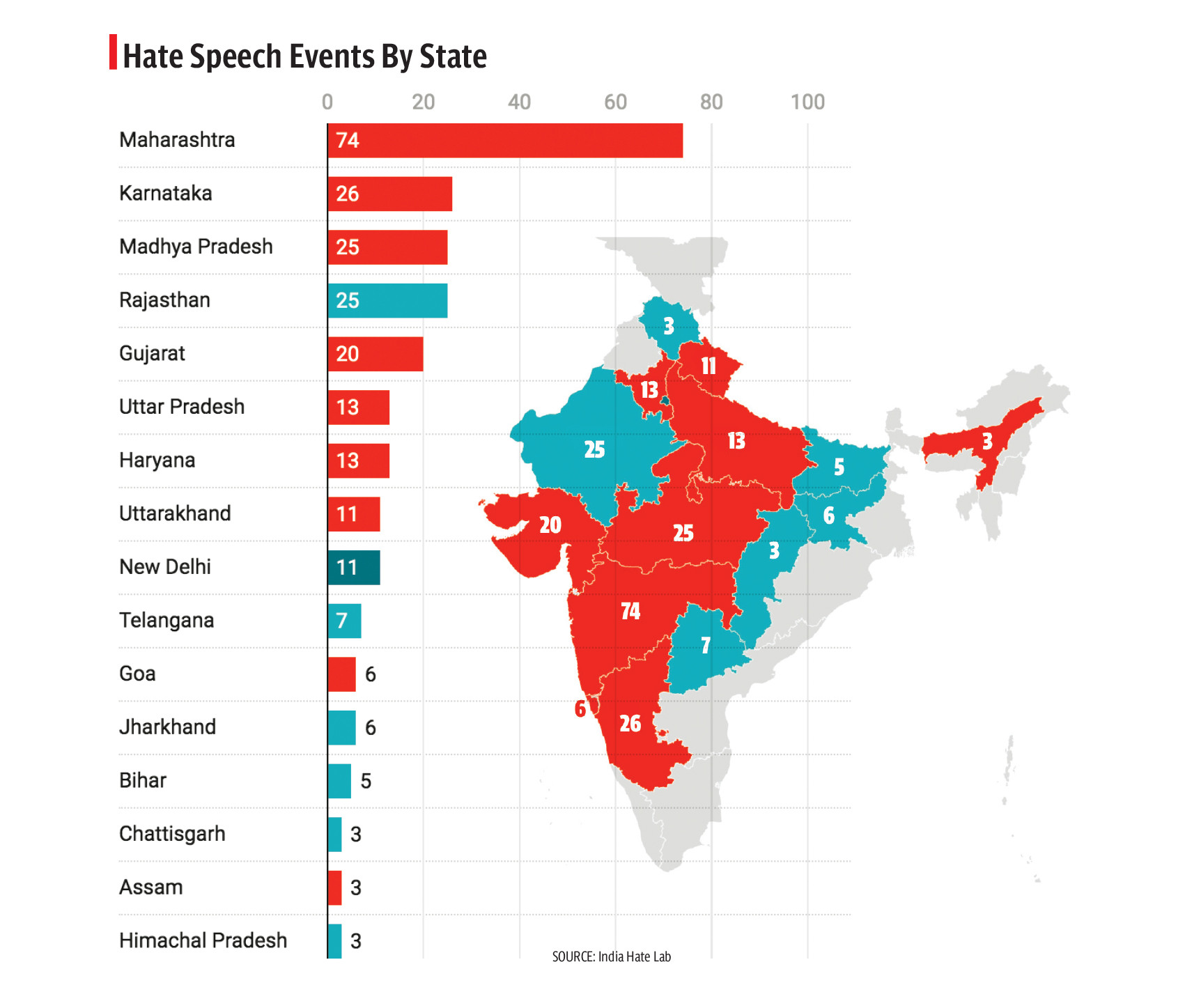
Red flags abound
To the many in attendance in Ayodhya and the countless viewers tuning in from across India, Modi portrayed the unveiling of the temple as heralding a ‘new era’ for the nation. Addressing the chanting and dancing devotees, who had assembled in the thousands to witness the event, the BJP leader proclaimed, “The Lord has made me an instrument to represent all the people of India.” That was not the end of Modi’s theatrics. The day following the grand consecration of the Ram idol, he took to X, formerly known as Twitter, and said, “What we witnessed in Ayodhya yesterday, on January 22nd, will be etched in our memories for years to come.”
Indeed, it will be deeply ingrained in India’s national memory. Experts believe that the inauguration of the temple signifies a pivotal moment in India’s collective narrative. It represents the culmination of a longstanding aspiration for a Hindu rashtra, or Hindu nation, intended to rectify what right-wing nationalists see as the great injustice – the branding of India as a secular republic. Above all, it provides Modi with the opportunity to fortify his influence over a substantial and growing voter base – one that embraces the notion of a pure Hindu state – created only for Hindus.
“The Ram Mandir represents a change in the longstanding balance, in the direction of the Hindu Right’s goal, a Hindu state,” explained Professor Martha C. Nussbaum. Expressing profound apprehension regarding the current trajectory of Indian politics under Prime Minister Narendra Modi's leadership, Professor Nussbaum remarked, “It is a major and disturbing step, but just one of many steps.”
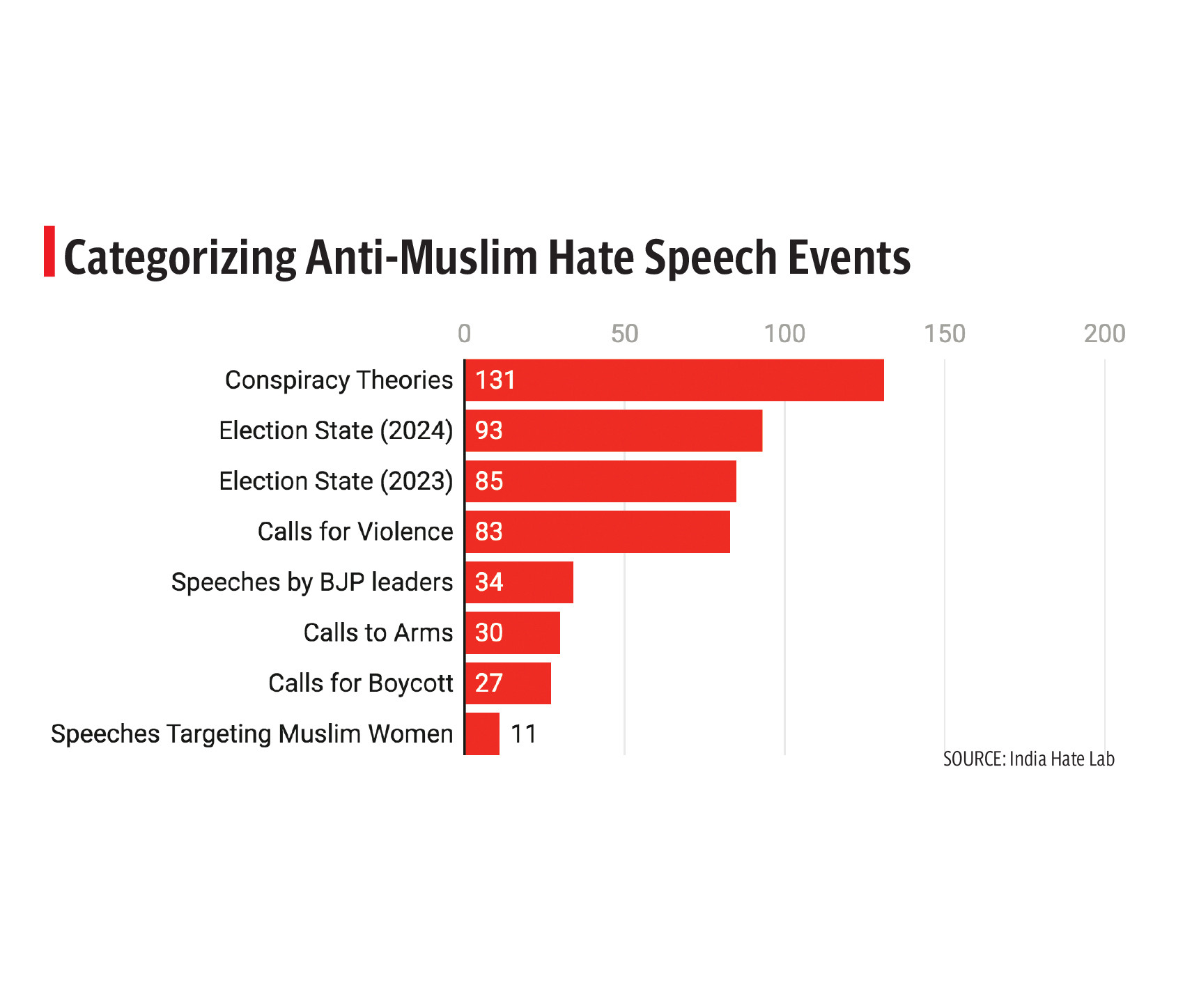 Commenting on the Indian Prime Minister’s political trajectory, the author of ‘The Clash Within,’ a book offering a nuanced examination of the complex challenges confronting India as it navigates the realms of democracy, religious identity, and the quest for a pluralistic society, remarked, “Modi is an old RSS man, and his goal has always been to transform India into a Hindu state, relegating Muslims and Christians to second-class citizenship.” She drew attention to the ideological underpinnings of this goal, tracing it back to ‘We or Our Nationhood Defined,’ a book by Madhav Sadashivrao Golwalkar, the RSS’s ideological guru, a figure revered by Modi himself. Golwalkar’s book openly lauded Nazi Germany as a template, providing a framework for Modi’s Hindutva, which resonates with the Eurocentric ideals of the Nazi regime. Nussbaum flagged Modi’s recent rallying cry for a ‘1000-year rule of Ram’ as particularly worrisome, highlighting its parallels to Hitler’s ambition for a ‘1000-year Reich’. “To put it mildly, this is a deeply ominous trajectory,” the Chicago-based academic cautioned.
Commenting on the Indian Prime Minister’s political trajectory, the author of ‘The Clash Within,’ a book offering a nuanced examination of the complex challenges confronting India as it navigates the realms of democracy, religious identity, and the quest for a pluralistic society, remarked, “Modi is an old RSS man, and his goal has always been to transform India into a Hindu state, relegating Muslims and Christians to second-class citizenship.” She drew attention to the ideological underpinnings of this goal, tracing it back to ‘We or Our Nationhood Defined,’ a book by Madhav Sadashivrao Golwalkar, the RSS’s ideological guru, a figure revered by Modi himself. Golwalkar’s book openly lauded Nazi Germany as a template, providing a framework for Modi’s Hindutva, which resonates with the Eurocentric ideals of the Nazi regime. Nussbaum flagged Modi’s recent rallying cry for a ‘1000-year rule of Ram’ as particularly worrisome, highlighting its parallels to Hitler’s ambition for a ‘1000-year Reich’. “To put it mildly, this is a deeply ominous trajectory,” the Chicago-based academic cautioned.
But, as Nussbaum pointed out, the inauguration of the Ram Temple is just one of many missteps that raise red flags. Of particular concern, Nussbaum noted, is Modi's control over the media and his crackdown on academic freedom in Indian universities, both public and private, driven by donor pressure.
“India now ranks very low on measures of press freedom and academic freedom," she noted. Reflecting on the essence of Hinduism, Nussbaum lamented its distortion under the BJP governance, emphasising the tradition of pluralism and toleration epitomised by Gandhi, India’s founding father, who included Muslims and Christians in leading roles in the independence movement. “The real historical Hinduism, too, is being lost,” she warned. “I feel very sad for a country that I have in the past profoundly admired and still love,” said Nussbaum.
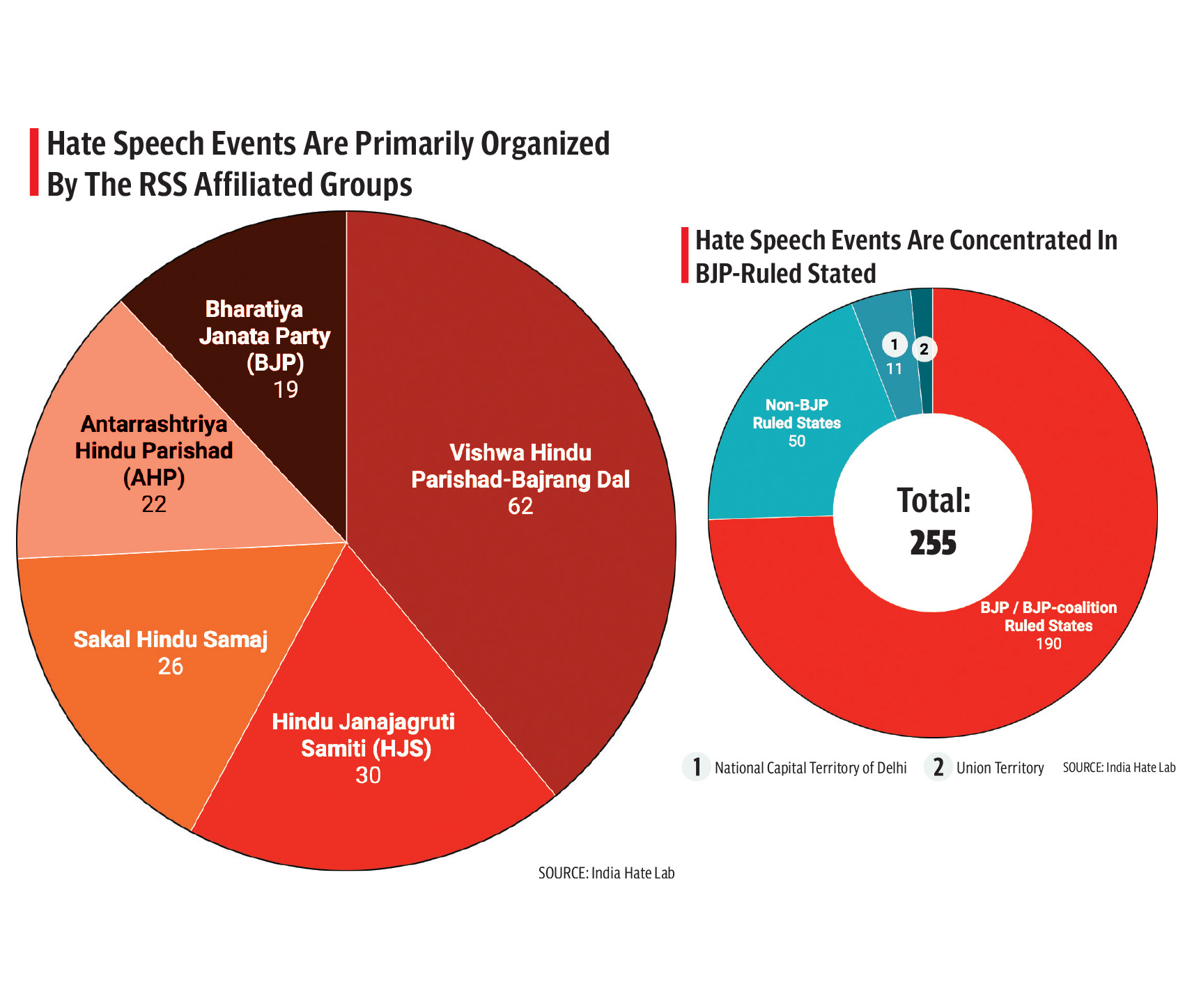
Erosion of freedoms
During Modi’s decade-long tenure, India has experienced a gradual erosion of freedoms, particularly impacting its minority communities. In the past year, Hindutva Watch, an independent research initiative dedicated to monitoring attacks on marginalised groups, documented 255 instances of hate speech gatherings targeting Muslims. Alarmingly, 80% of these incidents, totaling 205, occurred in states and union territories governed by the ruling BJP. According to Hindutva Watch’s latest report, approximately 52% of hate speech gatherings in BJP-controlled regions were orchestrated by entities linked to the RSS, including the Vishwa Hindu Parishad (VHP), the Bajrang Dal, the Sakal Hindu Samaj, and the Bharatiya Janata Party. Overall, RSS-affiliated groups accounted for 42% of hate speech events across 17 states and two centrally controlled territories.
These trends mark a significant departure from India of December 1992, when the Babri Mosque was demolished. At the time, Prime Minister P. V. Narasimha Rao described the event as a matter of ‘great shame and concern for all Indians’. In an address to the nation hours after the demolition, the former premier expressed grave concern over the threat posed to the institutions, principles, and ideals upon which the constitutional structure of the republic was built.
Fast forward to 2024, India is governed by a figure whose past is clouded by controversy. As documented in the British documentary ‘India: The Modi Question’, one of the most violent chapters of India’s post-independence history unfolded under Modi’s leadership, with him playing a central role. During his tenure as Gujarat’s chief minister, Modi faced intense scrutiny for his handling of the infamous Hindu-Muslim riots that tore apart the state. The violence, which claimed the lives of approximately 1,000 individuals, mostly Muslims, was depicted in the BBC special as bearing ‘the hallmarks of ethnic cleansing’ against Gujarat’s Muslim minority, drawing on accounts from unnamed British officials and a Foreign Office dossier.
That’s not all. Modi’s administration has taken measures against human rights organisations like Amnesty International, citing concerns over their advocacy regarding violations in Kashmir and their opposition to the controversial citizenship act affecting the Muslim population. Furthermore, Prime Minister Modi has exhibited little tolerance for critical media coverage. Just this month, authorities in New Delhi expelled a French journalist who had been based in India for two decades, sparking widespread condemnation. Anne Bocandé, the editorial director at Reporters Without Borders, a group advocating for press freedom, criticised the expulsion, stating, “Forcing a seasoned professional journalist to leave India... reveals a very dark and deplorable image of what press freedom has become under Prime Minister Narendra Modi.” Bocandé emphasised the need for Indian authorities to ensure journalists' safety and freedom to work without intimidation or censorship.
Modi's efforts to reshape India's history and curriculum are also significant. As reported by The New York Times in 2023, the start of the academic year in India witnessed the distribution of ‘watered-down’ versions textbooks on history and politics to thousands of classrooms. These revisions reflected a narrative that aligned with the Hindu nationalist agenda of the prime minister’s ruling BJP.
The article highlights that these changes systematically targeted references considered inconvenient by the right-wing Bharatiya Janata Party. For instance, connections between Hindu extremism and the assassination of Mohandas K. Gandhi, the secular founder of post-colonial India, were downplayed. Similarly, the revisions minimised the significance of the 2002 Gujarat riots, during which hundreds of Muslims were killed in violence that occurred while Modi was the state’s chief minister. Additionally, chapters covering Mughal history, which encompassed centuries of Muslim rule, underwent significant reductions, or were entirely removed from the updated textbooks.

Divine moment or political gimmick?
In the northern town of Ayodhya, the Ram Mandir stands only half-built, yet it seamlessly aligns with Modi’s overarching agenda of catering to his voter base. Portrayed as the pinnacle of Hindu resurgence following centuries of perceived subjugation by Muslim and colonial powers, it symbolises the culmination of India’s authentic Hindu identity. Professor Ashok Swain, however, dismisses the temple’s inauguration as a mere political ploy by the prime minister. “It is important to note that temples are not inaugurated before completion. This is a purely political move aimed at garnering votes in the upcoming election. This is a political project, not a religious project,” he said.
Swain, a prominent academic based in Sweden, who has recently been deprived of his Indian citizenship for criticising Modi’s policies, particularly those impacting India’s minorities, emphasised that the prime minister proceeded with the inauguration alongside the RSS leader, despite objections from the four shankaracharyas, the principal religious figures of Hinduism. According to the Uppsala University professor, Modi has increasingly utilised religion for political advantage.
“Hate has been used as a political weapon, and that has been effective electorally for Modi.” Swain underscored the detrimental impact of this strategy on India’s democracy and secular fabric. “Of course, it has degraded India’s character as a democracy and as a secular nation.”
When asked to comment on the deviation from the principles laid by India’s founding leaders Gandhi and former prime minister Jawaralal Nehru, Swain said, Modi’s India was far from those values. “In the past, the leadership advocated for secularism and pluralism in India from the top. Now, we are witnessing the leadership undoing those principles from the top.”
India, Swain observed, “always had a thin layer of secularism and tolerance.” However, he contended, Modi’s leadership has sought to erode that facade. “He has been denouncing Gandhi’s ideals,” Swain remarked, highlighting the departure from the principles advocated by India’s founding father, who was assassinated by Nathuram Godse, a member of the RSS.
“In spite of Modi’s efforts to dismantle the legacies of Gandhi and Nehru, he remains the most popular leader in the country. Modi’s approach involves leveraging a majoritarian form of politics, intertwining religion and governance for personal advantage. No one appears poised to challenge him in the current polarised climate in India,” he explained.
“Under Modi, the political discourse has undergone a significant shift. It has now become not only socially acceptable but also politically advantageous to espouse Islamophobia, anti-Christian sentiment, or hostility towards minorities. Even labeling Sikhs as Khalistanis or separatists has become part of this trend,” cautioned Swain.
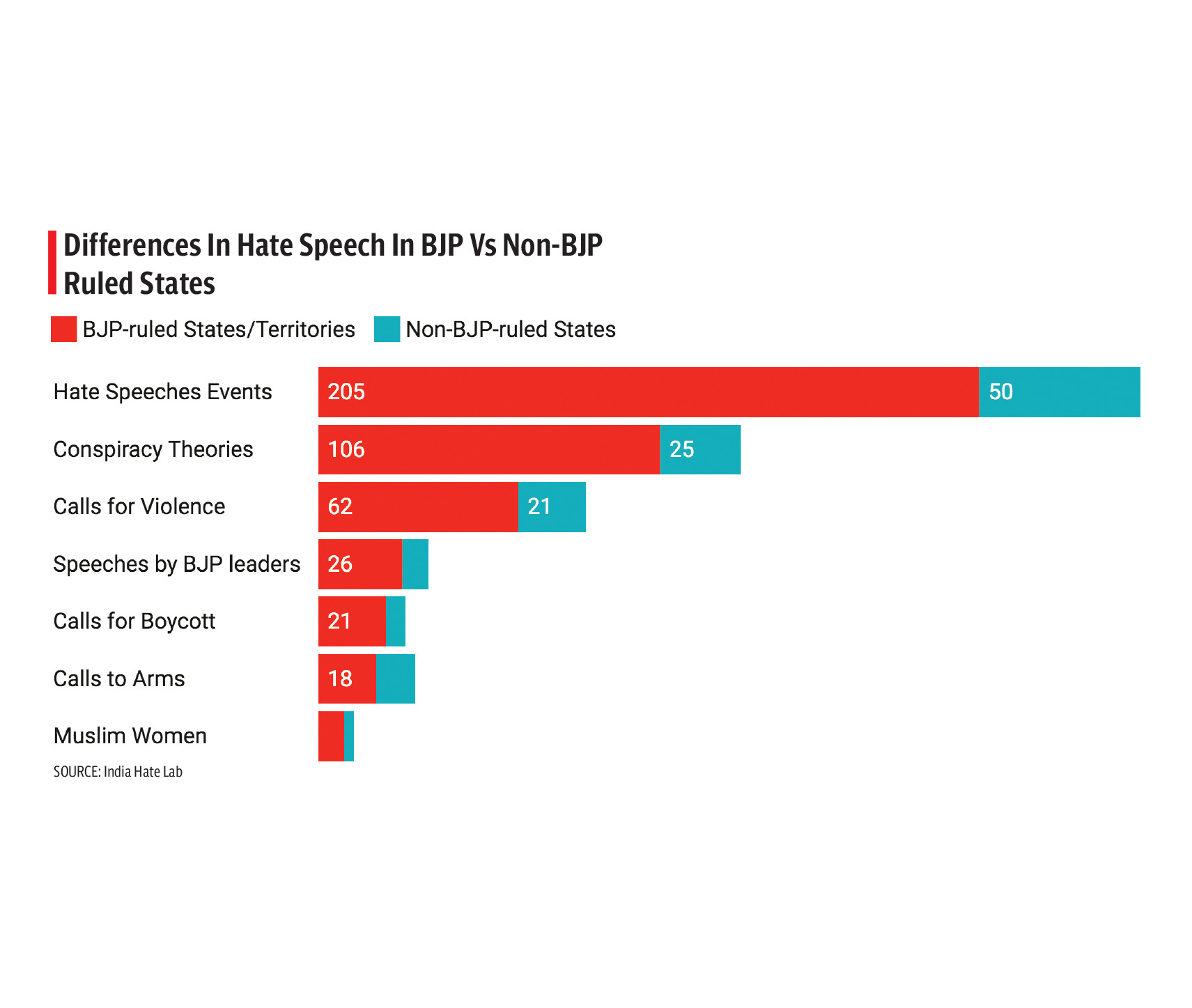
When asked to comment on support for Modi, the Sweden-based academic said, “Modi commands significant support within India, particularly among his Hindu base. The diaspora, largely Hindu as well, often engages in what can be perceived as double politics, advocating for minority rights in their host countries while supporting majority leadership back home.”
This dynamic, Swain warned, is likely to persist, even if Modi were to lose the next election or if other parties were to form a coalition government. However, Swain pointed out that the political landscape won't witness any immediate or easy changes. “Reversing the current trend would require substantial catalysts such as economic crises or widespread violence, like what has been witnessed in parts of Europe. Without such upheavals, it’s unlikely that India’s political discourse will revert to the ideals of Gandhi and Nehru. Overall, the process of change is expected to be challenging and gradual,” Swain concluded.
In the lead-up to India's highly anticipated elections, the inauguration of the Ram Mandir stands as a watershed moment in the nation’s political landscape. Promised by Narendra Modi decades ago, the temple’s construction has evolved into a symbol of the burgeoning influence of Hindu nationalism across the country. However, amid the fervor surrounding the temple’s unveiling, apprehensions loom large regarding the erosion of India’s democratic credentials. According to Swain, numerous institutions in India exhibited deference to the prime minister.
In 2019, India’s top court played a pivotal role in bolstering Modi’s Ram Temple project. The Supreme Court’s verdict favored Hindus in a long-standing dispute over a site contested by Muslims, handing the prime minister and his supporters a significant victory in their endeavor to reshape the nation along Hindu lines and distance it further from its secular roots. Shortly after the landmark court ruling in their favor, the construction of a Hindu temple on a site where a mosque had once stood began, and the structure was erected at remarkable speed. Historians regard the demolition of the Babri Mosque in the city of Ayodhya as a monumental event, setting the stage for sectarian tensions that continue to reverberate in India today. Prime Minister Narendra Modi and his Bharatiya Janata Party (BJP) swept India’s elections that May, campaigning on a platform of Hindu nationalism, with the court case serving as a catalyst. The party framed its pursuit of temple construction as a crucial stride in affirming India’s Hindu identity, aiming to erase centuries of perceived oppression under the Muslim Mughal Empire and British colonial rule.
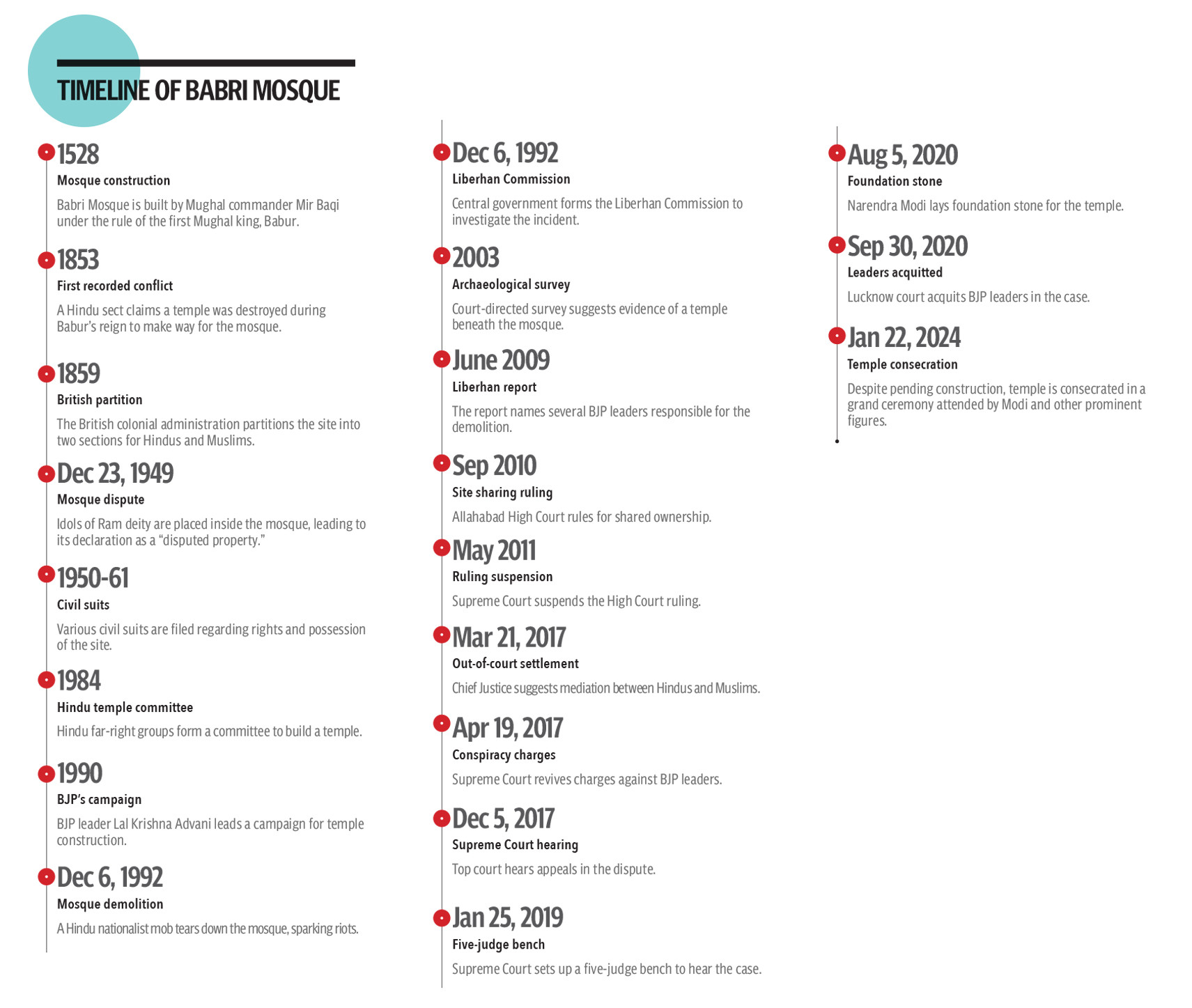
Modi’s majoritarianism
By positioning himself as the ‘high priest of Hinduism’ at the inauguration of the Ram Temple, Modi, who rose to prominence on the back of rightwing Hindu nationalism, has delivered an ultimatum to India’s minorities that the space for them in the country is shrinking.
Dr. Talat Wizarat, a prominent voice in the international affairs discourse, warns of the dangerous trajectory India finds itself on, where diversity is no longer celebrated but sidelined, and minorities are left marginalised and alienated.
Reflecting on the broader implications of the Ram Mandir’s inauguration, Wizarat, former chairperson of the International Relations Department at the University of Karachi, paints a concerning picture of India’s democratic decline under Modi’s leadership. She highlights the polarisation and fragmentation of Indian society, which has been further exacerbated by the BJP's divisive tactics, as evidence of a nation veering dangerously towards majoritarianism.
Critics argue that the grandeur of the Ram Mandir, with its golden doors and sprawling acres of land, serves as a trophy for Modi to display before his staunch rightwing Hindutva supporters. However, Wizarat sees it as the most prominent symbol of Modi’s majoritarianism, where the rights of minorities are trampled upon in the name of religious supremacy.
Despite India’s constitutional assertion as a secular state, Wizarat contends that secularism has all but disappeared from the country's fabric. The Karachi-based expert fears that if current trends persist, India may formally abandon its secular identity and declare itself a Hindu nation—a move with far-reaching consequences for its democratic principles.
Wizarat also raised concerns about the lack of international community’s response to India’s internal affairs, particularly the West’s reluctance to address human rights violations under Modi’s regime. While India’s strategic importance in the geopolitical arena cannot be understated, Wizarat warns that the West’s short-sighted approach may backfire, jeopardising India’s stability and integrity in the long run. In the face of Hindutva's rising tide, Wizarat urges the Indian government to contain Hindu fundamentalism and extremism, warning of the dire consequences of India's descent into religious extremism.
Comparing the India of Gandhi and Nehru to Modi’s era, Wizarat highlights a stark departure from the secular ideals once championed by the nation’s founding fathers. She contends that Modi has normalised extremism within Indian society, leading to a dangerous polarisation that threatens to spiral out of control.
“As India stands at a crossroads, the Ram Mandir’s inauguration serves as a stark reminder of the challenges facing the world's largest democracy. Whether India will reclaim its secular values or succumb to the forces of majoritarianism remains to be seen. But for now, the future appears uncertain, with the specter of extremism casting a long shadow over the nation's identity,” Wizarat concluded.
